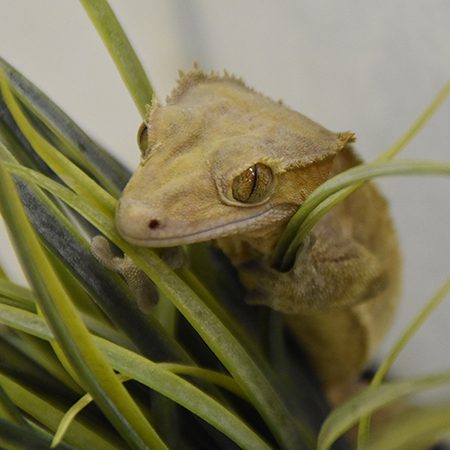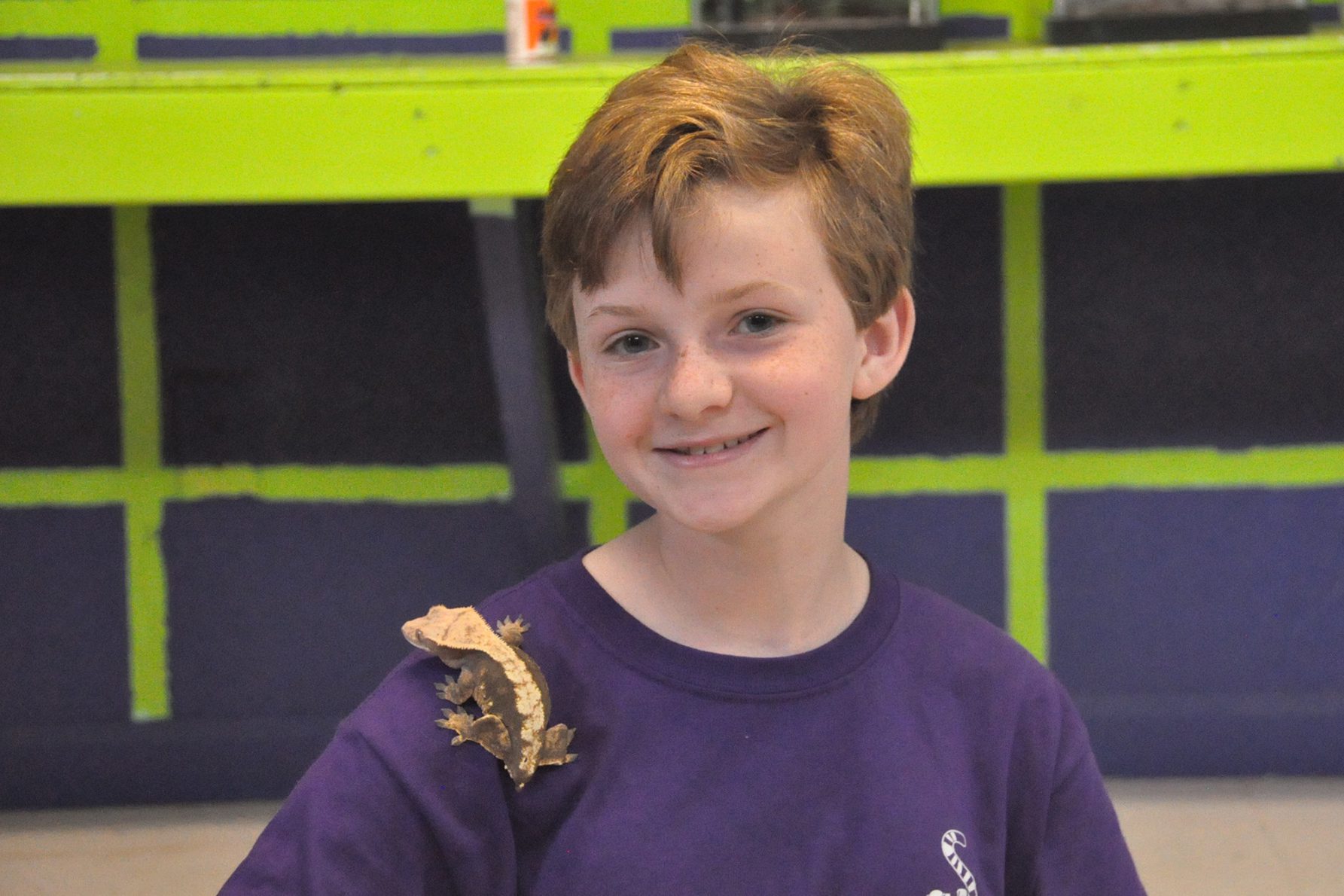Crested Gecko
Correlophus ciliatus
The Crested Gecko, also known as the Eyelash Gecko, are only found on two islands in New Caledonia. There are currently only three known populations of geckos, making them very vulnerable to extinction. They come in a range of colors, including a light tan, peach, or red brown. Usually there is an appearance of darker bands on their back between their crests. Captive geckos have been bred to have many different colors and patterns. These crests start behind the eyes and go all the way back to the tail. The purpose of them appears to be to keep dust away from the eyes, but the purpose for the rest of the body is unclear.
Geckos are known for their sticky hands, and Crested Geckos are one of the stickiest. They have four fingers, all covered in hairs called setae. These hairs allow them to stick to virtually any surface by means of tiny chemical bonds. They also have setae on the end of their prehensile tail, making them expert climbers with trees. Crested geckos are one of the species that do not have eyelids and must lick their eyes to keep them moist. Geckos do not have ears like mammals do, but rather just a tympanic membrane – a thin layer of skin that vibrates much like our eardrum.

Crested Geckos are endemic to South Province, New Caledonia.
HABITAT -They are found in the rain forests on two islands in New Caledonia.
DIET -They are omnivores, eating insects, nectar, and fruits.
FUN FACT -They can lose their tail to avoid predators but cannot grow it back.
SOCIAL BEHAVIOR -They are solitary animals, but very docile with humans.
ACTIVITY -These geckos are nocturnal, being active at night and hiding in vegetation during the day.
PREDATORS -The biggest predator of crested geckos are fire ants, followed by dogs, cats, rats, snakes, and other geckos.
SIZE -They only weigh 1-2 oz and are 8 in long.
RELATIVES -They are in the same genus as other endemic New Caledonia Giant Geckos.
CONSERVATION -Due to their restricted habitat and many predators, they are listed as Vulnerable under the IUCN.
Cub Creek Animal Care Information
Housing - Our Cresteds reside in the Creepy Crawley Room in the summer and hang out in the ALC in the offseason. They each live in their own terrarium, at least 15 gallons, that is filled with artificial plants and various places to hide. Their soil is kept moist and they are sprayed down with water several times a day to simulate their natural, tropical environment. They have access to fresh water as well.
Diet - Our lizards are fed on a reptile specific schedule, meaning they are fed Monday, Tuesday, Thursday, and Saturday. Reptiles have slow metabolisms and do not require to be fed everyday if they are fed adequately. They are fed a specially designed food made for crested geckos. It is a powder we mix with water and contains dried fruits, molasses, rice, and and lots of vitamins and minerals.
Enrichment - Reptiles do not need a lot of enrichment beyond their various hides. Our campers give them plenty of stimulation by handling them and even occasionally bringing them outside on warmer days in the summer.


